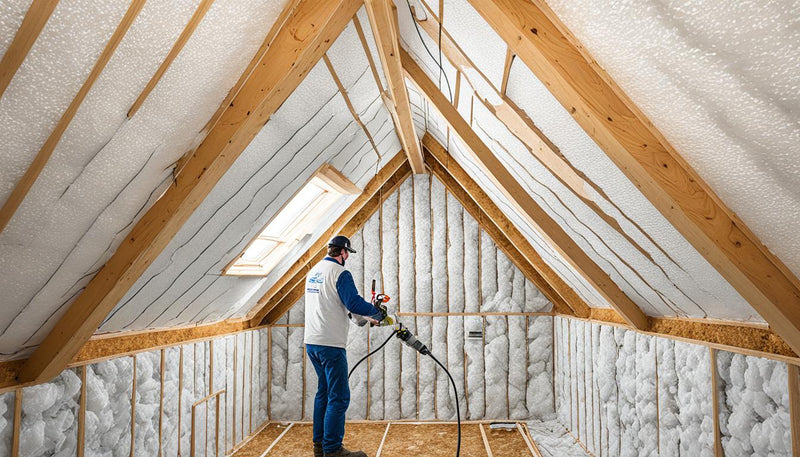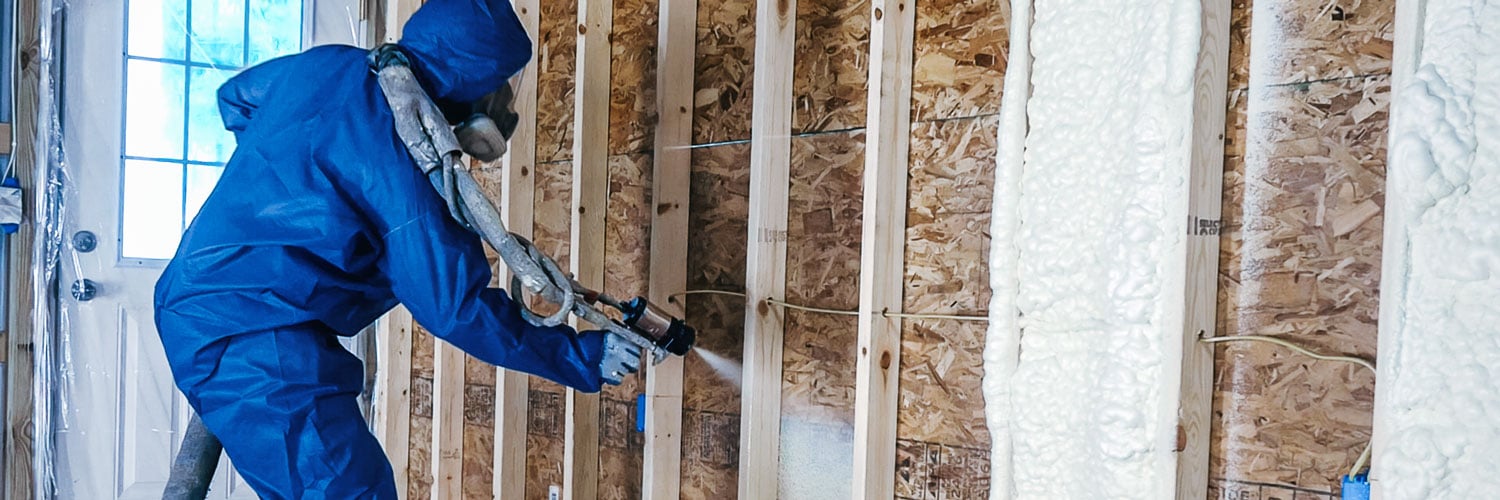Spray Foam: The Ultimate Solution for Air Sealing and Insulation
Spray foam insulation has emerged as a leading service for effective air sealing and thermal insulation, using a special combination of homes that establish it apart from conventional methods. Its capability to broaden and load spaces makes it particularly reliable in avoiding air leak, which can substantially impact energy performance. However, recognizing the full range of its advantages, installment procedures, and comparisons with other insulation types is important for making educated choices. As we check out these facets, the ramifications for both brand-new constructions and retrofits end up being significantly substantial. What elements should influence your choice?
What Is Spray Foam?
Spray foam is a functional insulation product that integrates the principles of air sealing and thermal resistance to boost power effectiveness in buildings. Composed primarily of polyurethane or various other comparable substances, spray foam is used as a fluid that broadens upon call with surface areas, developing a strong, constant layer of insulation. This unique residential property enables it to fill spaces, fractures, and voids that typical insulation materials might ignore, offering an exceptional air seal.
There are two major sorts of spray foam: open-cell and closed-cell. Open-cell spray foam is lighter and more adaptable, using exceptional noise absorption and a lower R-value per inch - Spray Foam. In comparison, closed-cell spray foam is denser, offering a higher R-value, dampness resistance, and included structural integrity to building components
The application procedure typically involves specialized equipment, making sure a seamless application that sticks to numerous substrates, consisting of timber, concrete, and metal. This adaptability makes spray foam appropriate for both new buildings and retrofitting existing frameworks. Its capability to develop an airtight obstacle considerably contributes to minimizing power usage and boosting indoor air high quality, therefore making it a favored selection among property owners and builders alike.
Benefits of Spray Foam Insulation
Among the most substantial benefits of spray foam insulation is its extraordinary capability to produce a continual air obstacle, which effectively minimizes energy loss. Unlike conventional insulation materials, spray foam broadens to fill up voids and splits, making certain that air leak is dramatically lowered. This particular not just boosts power performance but also leads to lower utility expenses gradually.
In addition, spray foam insulation gives superior thermal resistance, contributing to a more steady indoor atmosphere. Its high R-value per inch enables efficient insulation in restricted areas, making it ideal for attics, walls, and crawl rooms. Furthermore, the moisture-resistant properties of spray foam help avoid mold and mold growth, promoting healthier living conditions.
An additional essential advantage of spray foam insulation is its sound-dampening high qualities (Spray Foam). It successfully decreases sound transmission in between spaces, creating a quieter and more comfy home environment. The sturdiness of spray foam also stands out, as it does not droop or resolve over time, maintaining its efficiency throughout its life-span
Exactly How Spray Foam Works
Understanding exactly how spray foam insulation functions is important for appreciating its efficiency in air securing and thermal resistance. Spray foam insulation is composed of 2 main components: isocyanate and polyol resin. When these elements are mixed, they go through a chemical reaction that causes the product to broaden rapidly, developing a dense foam that fills fractures, gaps, and tooth cavities.
As the foam increases, it sticks to surfaces, forming an airtight seal that considerably decreases air infiltration. This particular makes spray foam insulation highly effective at avoiding drafts and wetness infiltration, which can bring about energy loss and damage in time. Furthermore, the closed-cell variation of spray foam supplies remarkable thermal resistance as a result of its inflexible framework, efficiently lessening warmth transfer.
The unique residential properties of spray foam enable it to comply with irregular surfaces, guaranteeing extensive protection and a seamless barrier. As a result, spray foam insulation not just boosts power efficiency however additionally adds to boosted interior air quality by minimizing the buildup of allergens and pollutants. Eventually, recognizing the technicians behind spray foam highlights its function as an exceptional option for other insulation and air sealing in both domestic and commercial applications.
Installation Refine Review

Before setup, the room needs to be effectively cleaned and prepped, making certain that surfaces are devoid of debris, dampness, and dirt. Because impurities can compromise bond and total performance, this step is critical. Once the area is prepared, the application includes blending both parts of the spray foam, which expands upon get in touch with and fills up spaces successfully.
Educated specialists need to perform the installment, making use of customized equipment to ensure uniform coverage and optimal density. Safety precautions, including wearing protective gear and ensuring proper ventilation, are imperative during this process. After application, the foam usually treatments promptly, developing a solid obstacle that improves power efficiency.
Comparing Spray Foam to Traditional Insulation
When examining insulation alternatives, spray foam insulation stands out in comparison to conventional products such as fiberglass and cellulose. Among the primary advantages of spray foam is its remarkable air sealing abilities. Unlike fiberglass and cellulose, which can enable air seepage, spray foam increases upon application, filling up gaps and gaps to Clicking Here develop a closed seal. This leads to improved energy performance, as less warmed or cooled air escapes the home, leading to reduced utility costs.
In addition, spray foam supplies a higher R-value per inch than standard insulation types, offering even more efficient thermal resistance in a thinner account. This particular is particularly advantageous in spaces with minimal dental caries depth. In addition, spray foam is resistant to dampness and mold development, which can be a considerable concern with cellulose and fiberglass, specifically in humid atmospheres.
Nevertheless, spray foam insulation generally lugs a greater upfront expense than its typical counterparts. Homeowners should weigh this initial financial investment versus long-lasting energy financial savings and efficiency advantages. Inevitably, while both insulation types offer their function, spray foam becomes an advanced option for contemporary insulation demands, particularly in terms of air sealing and thermal efficiency.

Conclusion
In recap, spray foam insulation represents a highly reliable solution for accomplishing ideal air sealing and thermal resistance. Its unique buildings, including dampness resistance and noise dampening, make it suitable for various applications in both new constructions and retrofitting projects (Spray Foam). Although the initial prices you can look here might be greater compared to traditional insulation materials, the lasting advantages, such as considerable energy savings and boosted indoor air quality, justify the financial investment and highlight its value in modern-day structure methods.
Spray foam insulation has arised as a leading option for efficient air securing and thermal insulation, using a special combination of buildings that establish it apart from standard techniques.Spray foam is a versatile insulation material that incorporates the principles of air sealing and thermal resistance to boost energy efficiency in structures.When examining insulation options, spray foam insulation stands out in comparison to typical products such as fiberglass and cellulose. Inevitably, while both insulation types serve their objective, spray foam emerges as an extra sophisticated service for contemporary insulation needs, particularly in terms of air securing and thermal effectiveness.
In summary, spray foam insulation represents a very efficient solution for attaining optimal air sealing and thermal resistance.